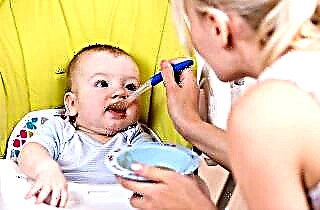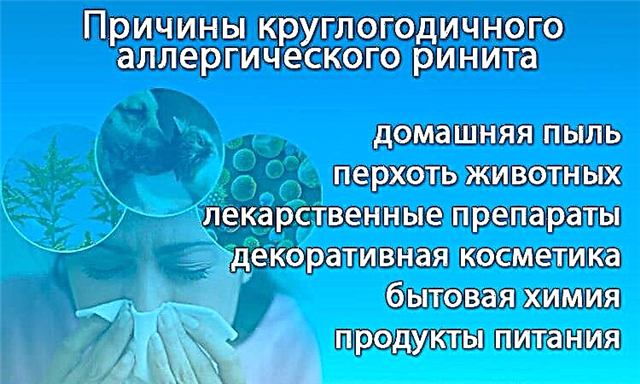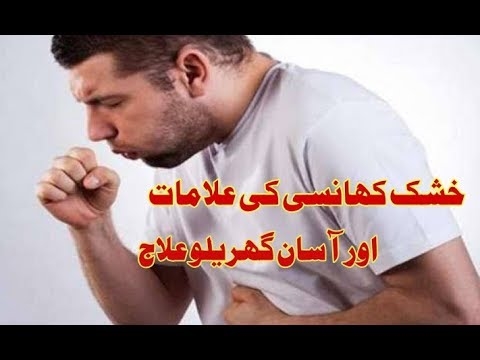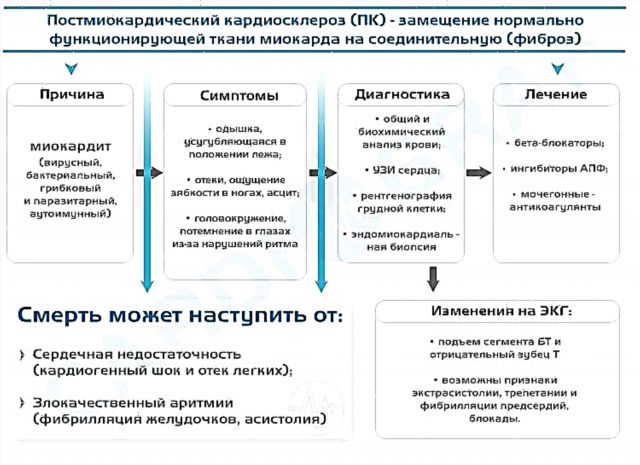Children get sick more often than adults. Their immune system is weaker, it is difficult for it to fight off severe infections, so it is easier for a child to catch respiratory diseases. Children are more likely to catch colds, since the thermoregulation system is not yet developed enough to adapt to sudden changes in ambient temperature. Therefore, cough is almost a constant companion for most children. Many mothers do not pay attention to this if there is no fever or other symptoms of respiratory diseases, attributing this to the residual cough in the child. But this is not always the case.
Features and symptoms
 Residual cough is a medical term. It denotes the reflexive coughing up of the remnants of the sputum accumulated during the illness. Therefore, its first sign is a previous respiratory or broncho-pulmonary disease. That is, such a cough does not appear "out of the blue", for no apparent reason. It also has other features:
Residual cough is a medical term. It denotes the reflexive coughing up of the remnants of the sputum accumulated during the illness. Therefore, its first sign is a previous respiratory or broncho-pulmonary disease. That is, such a cough does not appear "out of the blue", for no apparent reason. It also has other features:
- there are no other symptoms of the disease (fever, runny nose, etc.);
- the child is active, feels good;
- the cough does not last longer than 2-3 weeks;
- it is not paroxysmal;
- there is no phlegm or very little of it;
- mucus is white or transparent, without traces of blood;
- gradually becomes less and less common.
If a cough after ARVI, colds or bronchitis looks like this, then you really do not need to treat it with medication. In a child with strong immunity, it goes away on its own.
Weak babies can be helped using proven folk remedies. But you need to constantly monitor the child's condition.
What is the danger of residual cough
If the child's residual cough does not go away within a month, a consultation with a doctor is required. Most likely, the immunity weakened by the disease missed another infection or left untreated foci of inflammation, and there is a possibility that the disease will become chronic. But there are other dangers as well.
A persistent residual cough after bronchitis in a child is usually dry and severely irritating to the larynx. This can cause chronic pharyngitis. If coughing attacks become more frequent at night, the child experiences constant stress. He begins to be afraid of the night and the repetition of attacks, and this gradually leads to the development of bronchial asthma, which is very difficult to get rid of.
The residual cough in a child who is constantly exposed to external stimuli, such as tobacco smoke, lasts much longer. Even if the parents do not smoke in his room, the smoke permeates clothes, furniture, interior items and gradually poisons the child.
 After illness, the mucous membranes of the bronchi and lungs are damaged and much more sensitive. Therefore, even a weak effect of negative factors will be sufficient for the child to start coughing.
After illness, the mucous membranes of the bronchi and lungs are damaged and much more sensitive. Therefore, even a weak effect of negative factors will be sufficient for the child to start coughing.
You should not wait a month, but you should consult a doctor as soon as possible if one or more other unpleasant symptoms have been added to the residual cough:
- there is a yellow or green color of sputum;
- its number has noticeably increased;
- coughing attacks became more frequent;
- there was choking, signs of oxygen deficiency;
- wheezing, whistling and other strange sounds when breathing became audible;
- body temperature has risen sharply;
- lost appetite, the child is losing weight;
- when coughing up, traces of blood are noticeable in the mucus;
- the child complains of chest pain;
- activity has disappeared, the baby is lethargic, sleeps a lot, is often naughty.
All this may indicate that the child is sick again or the treated disease has returned. This is no longer a place for self-medication. An urgent examination and a well-chosen complex therapy are needed.
Traditional methods
 In a strong baby, the residual cough goes away on its own in a couple of weeks. But even he will not be hurt by a little help, which gently relieves irritation of a sore throat and promotes the rapid recovery of mucous membranes. It can be provided by proven folk remedies, and some are not inferior in effectiveness to ready-made pharmacy syrups and tablets.
In a strong baby, the residual cough goes away on its own in a couple of weeks. But even he will not be hurt by a little help, which gently relieves irritation of a sore throat and promotes the rapid recovery of mucous membranes. It can be provided by proven folk remedies, and some are not inferior in effectiveness to ready-made pharmacy syrups and tablets.
- Herbal teas. Drink as much as possible during the recovery period. The warm liquid warms up the throat, moisturizes the mucous membranes and washes away the remnants of the phlegm that has settled on the back wall of the larynx. Water dissolves and removes the decay products of drugs, toxins and other unnecessary substances from the body. So that at the same time there is a cough treatment and a cleansing of the whole body. Teas made from chamomile, linden, rose hips, currant leaves, lemon balm, mint, and dill water are perfect for this purpose.
- Gargling. You also need to do it often. It is better to use ready-made antiseptic solutions (chlorophyllipt, furacilin) for rinsing, essential oils dissolved in water (cedar, thuja, pine, eucalyptus, tea tree, sage), sea salt solution (or usual with the addition of iodine). It is helpful to gargle after a meal to rinse off any solid food residues that may irritate the mucous membranes.
- Lugol's solution. In part, it can also be considered a folk remedy, since you can prepare it yourself, although it is easier to buy it at a pharmacy. This is a mixture of iodine, water and glycerin, which has pronounced antiseptic properties, removes the remnants of pathogenic microflora from the oral cavity, moisturizes and heals damaged mucous membranes. It is necessary to treat the throat with such a solution 3-4 times a day.
- Aloe with honey. An excellent remedy for the treatment of residual cough, and for the general strengthening of the body. It has antibacterial, antiseptic, anti-inflammatory properties. Stimulates the regeneration of cells and tissues, activates the immune system. It is a source of vital vitamins and minerals. Chop the jelly-like pulp of the lower leaf cut from a tree older than three years and mix with an equal amount of high-quality natural honey. Give the child a teaspoon 3-4 times a day.
 Black radish juice. Helps in cases where the remains of thick phlegm are difficult to cough up, and the child is suffocated by an attack of unproductive cough. Cut off the tail from a large root vegetable and take out the middle with a teaspoon, leaving 1-1.5 cm of pulp. Fill the vacated space with honey and wait until the juice comes out (after a few hours). Give this syrup to the baby a teaspoon 3 times a day. It dilutes the phlegm and makes it easier to cough up the phlegm.
Black radish juice. Helps in cases where the remains of thick phlegm are difficult to cough up, and the child is suffocated by an attack of unproductive cough. Cut off the tail from a large root vegetable and take out the middle with a teaspoon, leaving 1-1.5 cm of pulp. Fill the vacated space with honey and wait until the juice comes out (after a few hours). Give this syrup to the baby a teaspoon 3 times a day. It dilutes the phlegm and makes it easier to cough up the phlegm.
You can buy ready-made herbal cough syrups at the pharmacy. Fortunately, now their choice is quite large: "Herbion", "Alteika", "Plantain syrup", "Doctor Mom" and others.
Homeopathic remedies individually selected by a specialist give good results. Therefore, it is quite possible to treat residual cough without the use of "chemistry", as many mothers say.
Home physiotherapy
Steam inhalations, which most children do not like very much, have an excellent healing effect. Parents often try to replace a saucepan with steam or a steam inhaler with the now fashionable nebulizer. But in this case, such a replacement is ineffective. A finely dispersed suspension well treats pneumonia and bronchitis, as it can penetrate deeply and linger on mucous membranes. And it just flies by in the upper respiratory tract. It is steam that is needed to treat them.
You can use any heating method: mustard plasters, compresses, rubbing, a blue lamp, salt bags and paraffin wax. Such procedures expand the bronchi, contributing to their better cleansing, facilitate breathing, and increase the flow of oxygen to diseased organs.
Older children can be bathed at night in decoctions of medicinal herbs, warming up the whole body and at the same time getting the effect of steam inhalation. But after such a procedure, the baby should already remain in bed, no physical activity is allowed.
 Drainage massage and breathing exercises will help to quickly get rid of stagnant sputum in the lungs and bronchi. How to do it correctly should be shown by a specialist. During the massage with beating and vibrating movements, the mucus seems to be "knocked out" from the lungs and begins to actively cough up. Respiratory gymnastics increases the vital capacity of the lungs, relieves bronchospasm, facilitates breathing and coughing up phlegm.
Drainage massage and breathing exercises will help to quickly get rid of stagnant sputum in the lungs and bronchi. How to do it correctly should be shown by a specialist. During the massage with beating and vibrating movements, the mucus seems to be "knocked out" from the lungs and begins to actively cough up. Respiratory gymnastics increases the vital capacity of the lungs, relieves bronchospasm, facilitates breathing and coughing up phlegm.
If there is such an opportunity, you can take the child to the clinic for electrical procedures: UHF, electrophoresis, darsonval, laser heating, quartz tube. But they are usually prescribed if the residual cough is paroxysmal or does not go away for more than three weeks. After warming up, you must stay in the room for at least 20-30 minutes so that there is no sharp temperature drop.
If, even after an additional course of treatment, the child continues to cough, a thorough and comprehensive diagnostic examination is necessary.
Most likely, this means that the cough is not respiratory, but has other, hidden reasons, on the timely detection of which sometimes depends not only the health, but also the life of the baby. So don't take your cough lightly, even if it's residual.

 Black radish juice. Helps in cases where the remains of thick phlegm are difficult to cough up, and the child is suffocated by an attack of unproductive cough. Cut off the tail from a large root vegetable and take out the middle with a teaspoon, leaving 1-1.5 cm of pulp. Fill the vacated space with honey and wait until the juice comes out (after a few hours). Give this syrup to the baby a teaspoon 3 times a day. It dilutes the phlegm and makes it easier to cough up the phlegm.
Black radish juice. Helps in cases where the remains of thick phlegm are difficult to cough up, and the child is suffocated by an attack of unproductive cough. Cut off the tail from a large root vegetable and take out the middle with a teaspoon, leaving 1-1.5 cm of pulp. Fill the vacated space with honey and wait until the juice comes out (after a few hours). Give this syrup to the baby a teaspoon 3 times a day. It dilutes the phlegm and makes it easier to cough up the phlegm.

